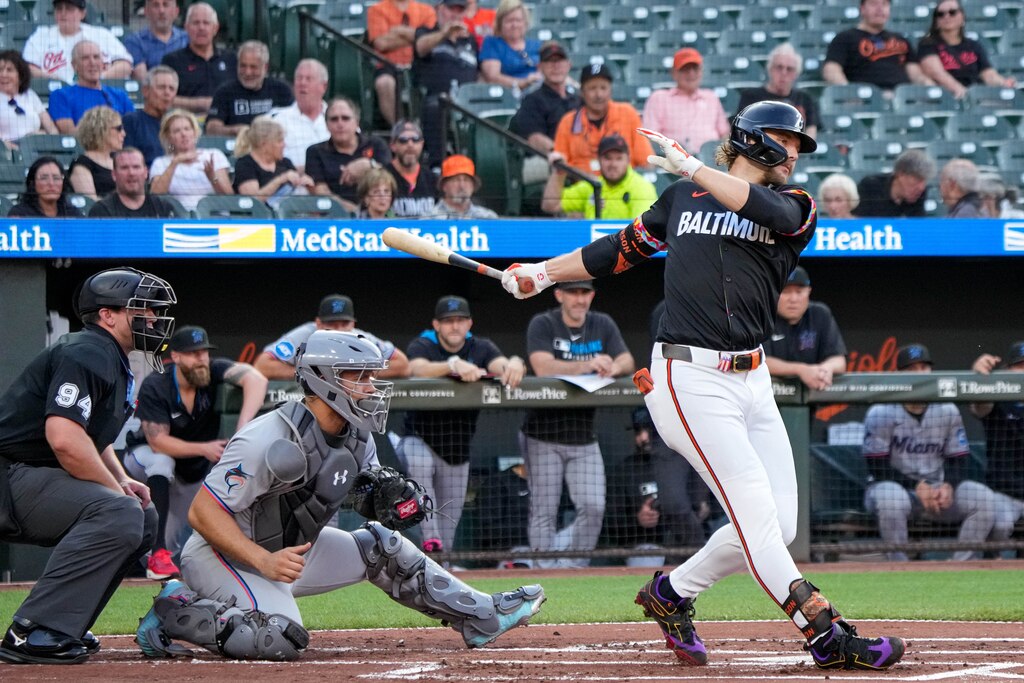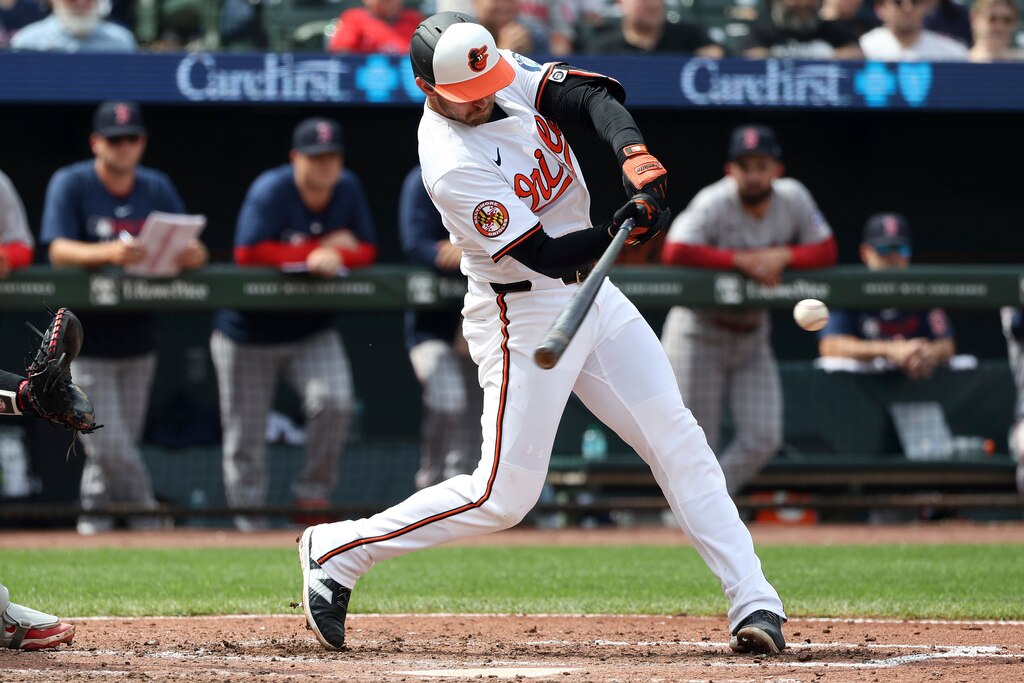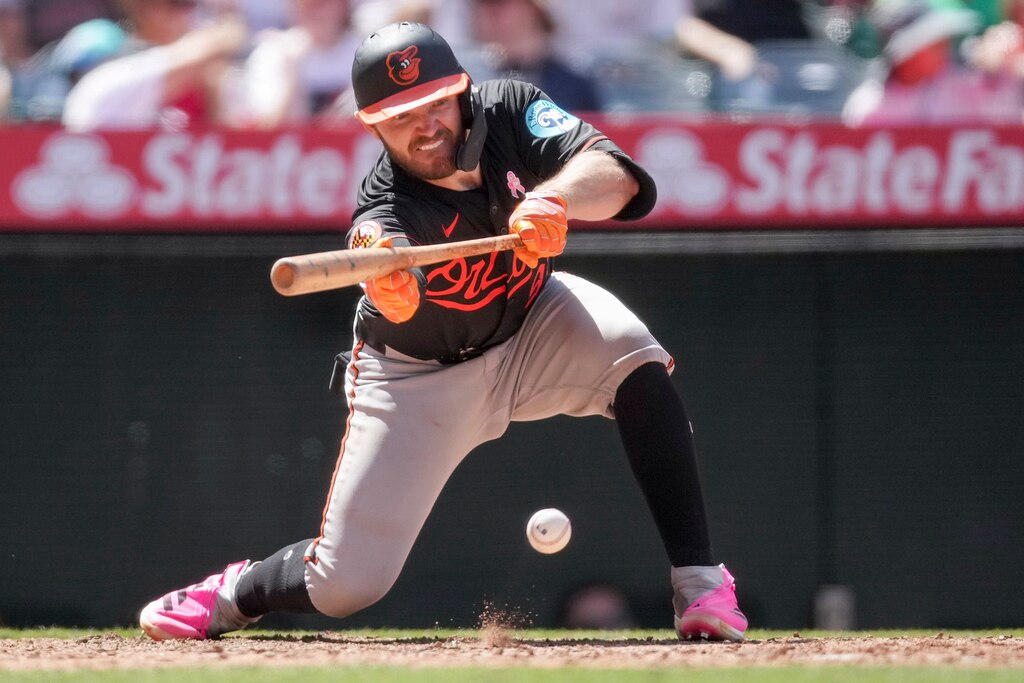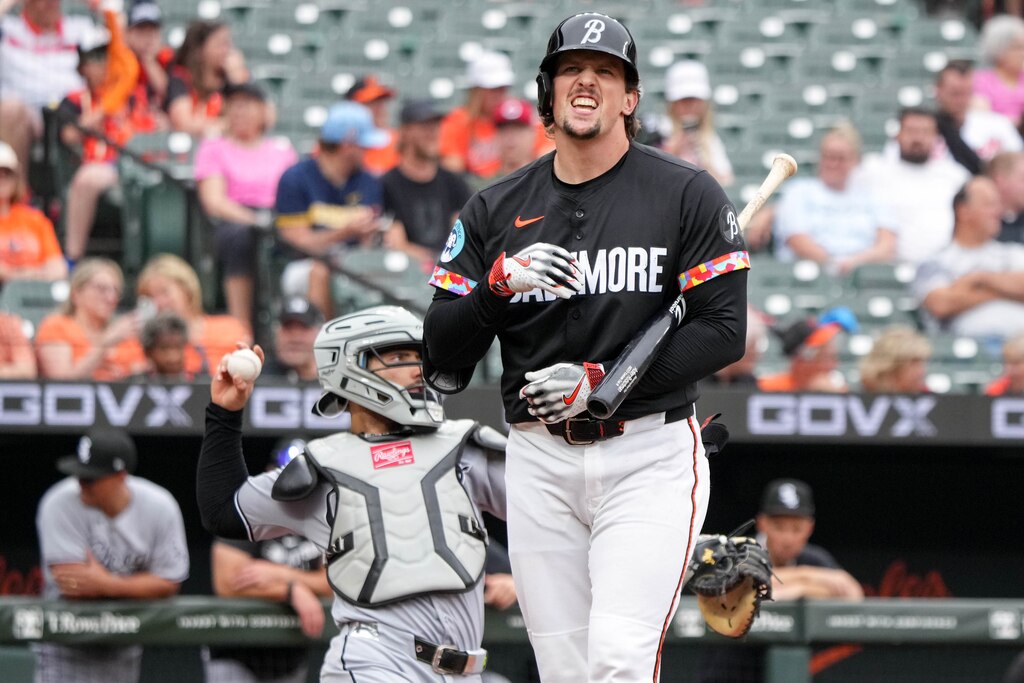Over the last month of the season, interim manager Tony Mansolino began looking ahead at what he called the Orioles’ No. 1 priority this offseason: fixing the offense.
Specifically, Mansolino said Baltimore needs to find a way to get their centerpiece players back on track. That group includes, but is not limited to, Adley Rutschman, Colton Cowser, Jackson Holliday and Gunnar Henderson — all of whom underperformed to varying degrees.
“I think we all understand the problem and the task at hand,” Mansolino said, despite no assurance he will be part of the solution. “And I think we all understand that it’s got to get fixed, and I think those guys are certainly up to the challenge.”
The offensive numbers for the Orioles are not the sole reason the club missed the postseason. Over the first month of the season, the ineffective rotation rendered almost any offensive firepower moot. And the trade deadline sell-off that sent Ryan O’Hearn and Ramón Laureano, among others, out the door didn’t help with creating runs.
The solution isn’t simple, either.
The organizational hitting philosophy crafted under president of baseball operations Mike Elias may be tweaked from year to year, and the specific messaging may alter with the occasional change of hitting coaches, but the formula is the same, from the majors to the lowest reaches of the minors. The Orioles preach a selective approach, prioritizing A-swings against pitches in areas batters feel most comfortable. And when batters make contact, the Orioles hope to put the ball in the air — maximizing the potential for power.
That can work. It has in the past. But for the last season and a half, the results haven’t followed.
“There’s a lot of soul searching and looking in the mirror individually, what could each of us have done better to get a better result for the team,” Elias said at his end-of-season press conference. “We’re formulating plans. And we’re going to do everything that we can to kind of have them bounce back and get back on track. Very, very, very confident that that’s going to happen with this group, and it’s obviously a huge factor for the team next year. But the talent in those guys and the work ethic and the mindset all points to optimism.”
The following numbers, however, are anything but promising.
These are five figures that characterize the underperformance of Baltimore’s offense.
24.2% strikeout rate

In over 40% of Baltimore’s games this season, hitters struck out 10 or more times. And overall, almost a quarter of all plate appearances ended in a strikeout. Strikeouts are high around the majors as pitchers throw harder, but that 24.2% strikeout rate was the third worst in baseball.
An extension of that, of course, is Baltimore’s 27.2% whiff rate — good for fourth worst, per Statcast. The interesting caveat is that the Orioles largely resisted pitches out of the zone (at 27.5%, their chase rate is among the best in the majors), but their hitters too often missed on pitches in the zone.
Baltimore’s zone contact rate was 80.8%, which is tied for the fourth lowest. That means when the Orioles swung at a pitch inside the zone, they whiffed nearly 20% of the time.
Putting the ball in play doesn’t guarantee a positive outcome. But it does leave open the possibility for success — something that strikeouts wipe away.
18.5% line-drive rate

The best teams in baseball do not necessarily need to hit line drives. The worst line-drive percentage in the league, according to FanGraphs, belongs to the New York Yankees, a club that finished well above .500.
Baltimore’s 18.5% line-drive rate, which is the second lowest in baseball, is an issue when coupled with other factors. For one, the Yankees didn’t hit many line drives yet led the majors in home runs, with assistance from the short right-field porch in their home ballpark. Out of all the fly balls New York hit, 15.9% of them were home runs.
The Orioles hit plenty of fly balls too but were only middle of the pack in homers. Their batted-ball results skewed more heavily to ground balls, and while contact is better than a strikeout, Baltimore’s hitting coaches of past and present rightly preach a desire for a launch angle between eight and 32 degrees — a range known as the sweet spot.
The lower end of that range results in line drives. The Orioles, for whatever reason, weren’t able to achieve that this year, despite hitting coach Cody Asche emphasizing line-drive swings.
“We want to hit balls hard. We want to hit a lot of line drives. We want to control the zone,” Asche said in February when describing his offensive philosophy.
4 sacrifice bunts

Many new-age minds in the game argue that bunting is a waste of an out. It would seem the Orioles agree with that mindset, considering their four sacrifice bunts were the fewest in the majors.
A lack of sacrifice bunting didn’t doom Baltimore’s offense. After all, the Detroit Tigers and the Yankees finished with the second- and third-fewest sacrifice bunts, and they made the postseason.
But when struggling for run creation, there is a case to be made for advancing a runner with fewer than two outs. And Mansolino agrees.
“I think these guys have to be pushed in spring training to turn back the clock a little bit and have the ability to play more of an early-’90s style of the game,” Mansolino said. “It’s a really hard thing to do during the season to put that type of stuff in place when you’ve got some players who go through a minor league system or a college career and they don’t bunt a lot. It’s hard to ask them to do that off a guy who’s throwing 100 in the ninth inning for the first time. That version of the game, that is an area where I think the staff here in place next year can make it better, and the time to do that is spring training.”
.235 batting average

Another sect of new-school thinkers insists batting average does not matter. On-base plus slugging percentage, these analytical minds argue, is a better way to measure how a batter performs. There’s truth to that belief, because OPS combines two major factors into one easily digestible number.
But for the sake of this story, batting average still matters.
Baltimore’s .235 average was tied for the sixth worst. For that matter, the Orioles’ .699 OPS ranked 21st out of 30 teams. And with runners in scoring position, the club’s .234 average was tied for the third lowest.
Any way it is sliced, that is an underperformance compared to the heights of 2023, when Baltimore won 101 games. The Orioles hit .255 that year with a .742 OPS. Even in 2024, as the offense began to fall off in the second half, the Orioles finished the year with a .250 average and .751 OPS.
The 75-87 record is evidence enough of the decline. The average and OPS regressions are some of the reasons behind it.
3-0 count

Once a batter reaches a 3-0 count, he should be at the greatest advantage against a pitcher to not only reach base, but to do damage. The Orioles underwhelmed in that department.
In plate appearances that reached three balls and no strikes, Baltimore often didn’t maximize the opportunity.
The Orioles struck out in plate appearances following 3-0 counts more often than any team (13.4%). Their 1.165 OPS in that count and beyond seems high, but given the advantageous nature of those plate appearances, that ranks sixth worst. And their 4.3 walk-to-strikeout ratio in plate appearances following a 3-0 count is the worst.
Too often the Orioles failed to turn a 3-0 count into a pivotal moment. It is an underlying problem that nagged the offense repeatedly. When given the upper hand, Baltimore didn’t do enough.




Comments
Welcome to The Banner's subscriber-only commenting community. Please review our community guidelines.